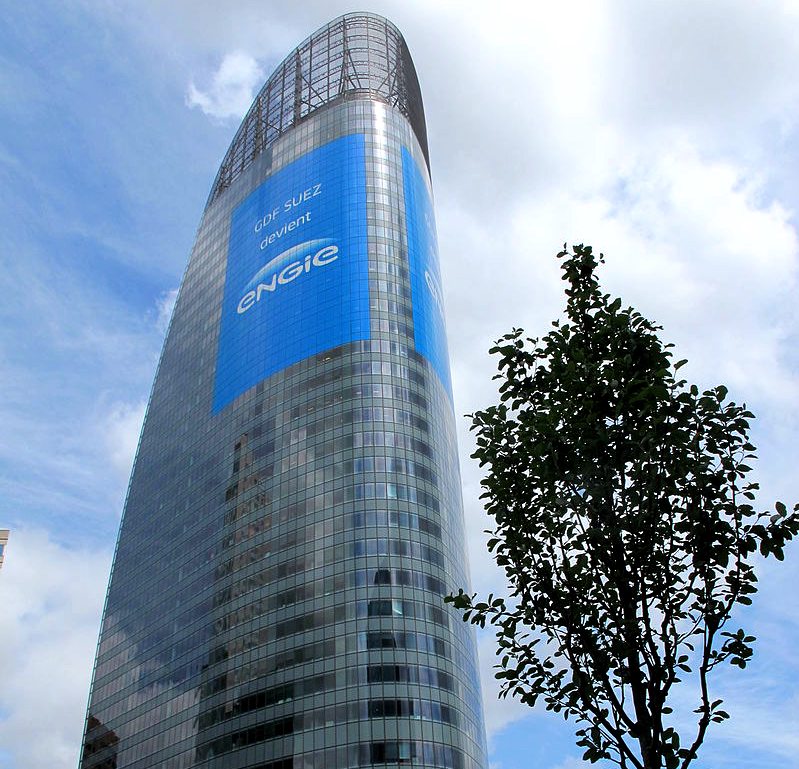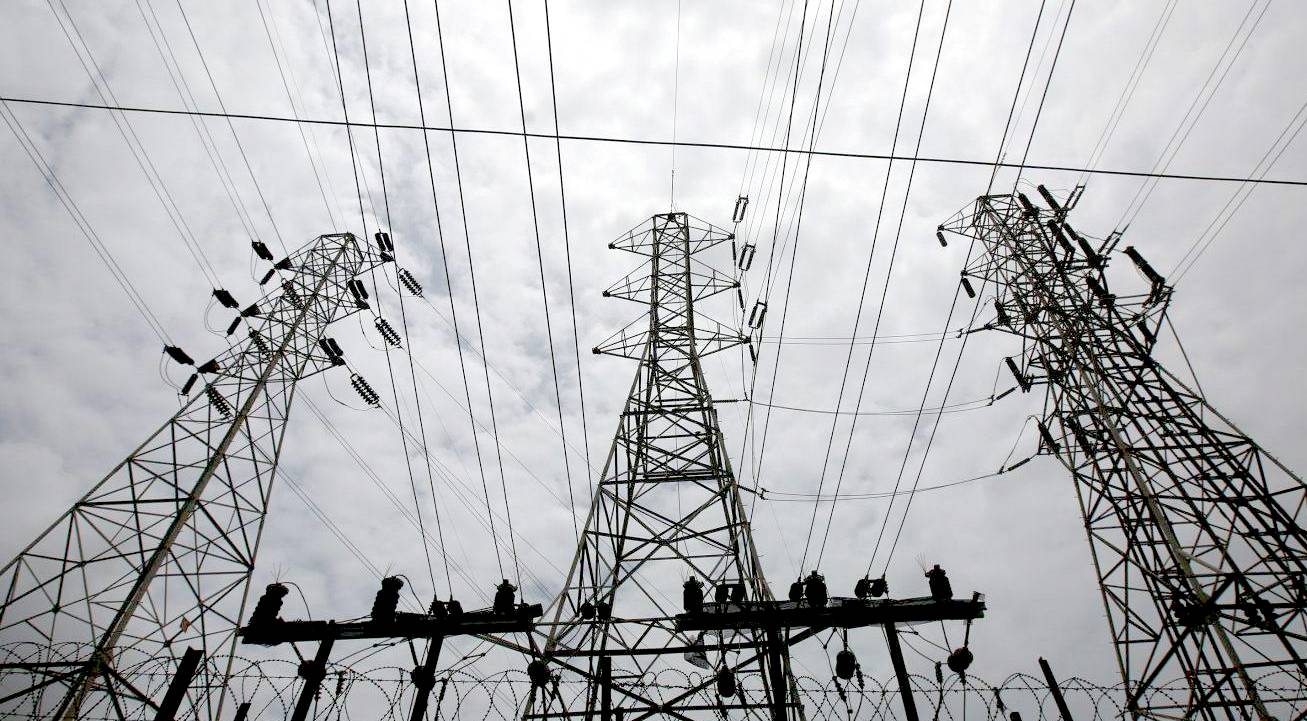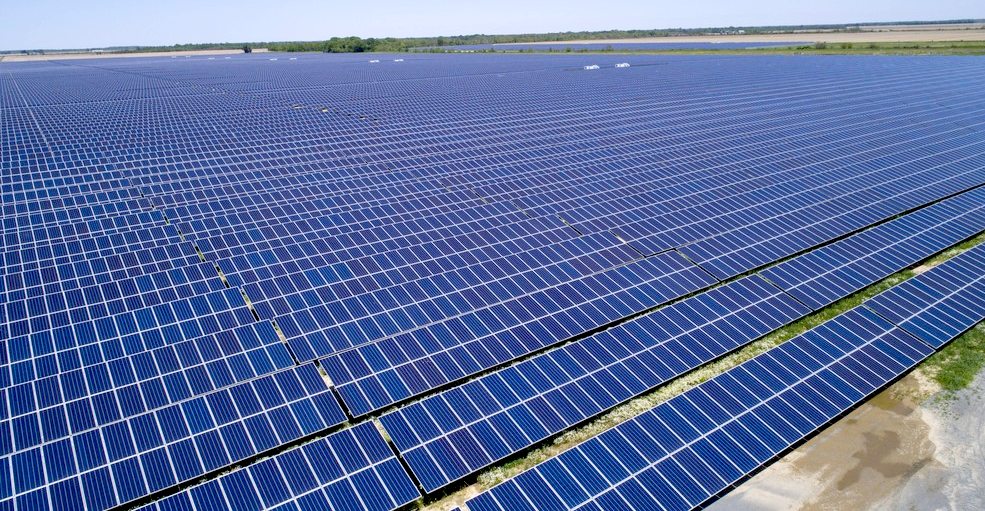
FREE
AS A BIRD
- It is happening. Wind energy is providing bucket loads of power that will
be more useful with the kind of load leveling that battery and
green
hydrogen
storage can provide, to make better use of all that captured natural muscle.
Windmills and sails had been working for mankind for hundreds of years
before the discovery of electricity. These graceful machines can be located
in isolated areas where winds are strong and reliable. Making allowance for storms,
doldrums, and power
blackouts, by design.
ABOUT
ENGIE ENGIE is a French multinational electric utility company, headquartered in La Défense, Courbevoie, which operates in the fields of energy transition,
electricity generation and
distribution, natural gas, nuclear, renewable energy and
Petroleum. Since 2014, ENGIE has operated a strategic shift, by reducing future exploration in
fossil fuels and investing massively in renewable energies (solar, wind, geothermal, biomass,
hydroelectric, and nuclear) and energy efficiency services.
In 2015, ENGIE announced its decision to stop new investments in coal plants, and to dispose of €15 billion in assets in order to reinvest into projects that promote low-carbon, distributed-energy. ENGIE also announced it will invest €22bn in renewable energies, energy services such as heating and cooling networks, and decentralized energy technology.
In 2016, Isabelle Kocher defines the strategy of ENGIE as follows: to promote decarbonized energy (oil and coal replaced by renewables and natural gas that emit less
greenhouse gases), decentralized energy (energy produced and stored as close as possible to its place of consumption), and digitized energy (big data and digital tools for energy efficiency and network management). The Group creates ENGIE Digital and plans to invest €1.5 billion on digital and new technologies related to energy.
ENGIE is also promoting an open innovation approach with its dedicated entity "ENGIE Fab" that supports in particular development of intelligent networks (smart grids), Internet of objects, green mobility, energy storage, and
hydrogen.
But
in 2022, they still have no solution to power
cuts and blackouts, causing major disruption in the modern age of
electricity - putting the lives of young, vulnerable and infirm at risk.
Also raising the question of this company failing to meet Paris climate
objectives aimed at Net
Zero - where reliability is a key factor in reaching United
Nations' Sustainability
Development Goals. Especially SDG7
clean, affordable energy for all, and SDG17,
partnerships, such as with automotive OEMs, where the supply of energy for
transport is their responsibility, as much as motor manufacturers have a
duty to provide zero emission vehicles (ZEVs) - meaning electrics, as a
solution that has finally come of age. But
where is the infrastructure to make this happen? Power
companies and automotive OEMs
need to work together urgently, if they are going to stand any chance of
catering for EVs by 2050. They have no chance at all at present levels of
cooperation and forward planning - of meeting the targets set for 2030 by
policy makers. They are far too comfortable, knowing they can give
politicians the run around with manifold excuses from spin doctors - who are
employed by climate
deniers - to keep burning carcinogenic
coal, diesel
and petrol. In
the process, they are making their countries vulnerable to suppliers of
energy who
have grown wealthy enough from fossil fuel exports, to wage war in 2022.
STRATEGIC PLAN 2019 - 2021
In 2019, Isabelle Kocher announces the strategic plan of the company for the 2019-2021 period, with an ambition to become the world leader in the zero-carbon transition. The strategic shift includes accelerating its investments in renewable energies and focusing on high-value added services to the clients.
Isabelle Kocher announces the definitive exit of coal activities. Engie plans to invest another €12 billion in renewable activities, partly financed by the sale of €6 billion assets (including the last coal plants).
The 12 billion break down as follows: 3 to 3.3 billion into gaz infrastructure; 4 to 5 billion into client services and solutions; and 2.3 to 2.8 billion into renewable
energies, adding a 9 GWH production capacity, to reach a renewable installed capacity of 52 to 64 GW by 2026.
As far as the services are concerned, Isabelle Kocher's plan is to develop "energy transition as a service" for large companies and metropolises, whom she says are driving the "second wave of energy transition" by searching ways to reduce their
carbon emissions (the first wave having been driven by the states).
She also says it might be "the invention of a new industry" of a 1 billion dollar potential value.
Engie also announces its intention to leave 20 of the 70 countries where it is active, and focus its activities on 20 countries and 30 metropolitan areas, mainly in Southeast Asia and Africa.
It is one of the few players in the sector to develop expert skills in both upstream (engineering, purchasing, operation, maintenance) and downstream (waste management, dismantling) activities.
The company, formed on 22 July 2008 by the merger of Gaz de France and Suez, traces its origins to the Universal Suez Canal Company founded in 1858 to construct the Suez Canal.
As of 2018, ENGIE employs 158,505 people worldwide with revenues of €60.6 billion. ENGIE is listed on the Euronext exchanges in Paris and Brussels and is a constituent of the CAC 40 and BEL20 indices.
ENGIE was headed from 2016 to 2020 by Isabelle Kocher, who has strongly transformed the company since 2016, notably by deciding to exit coal activities and by investing massively in renewable energies and energy transition services.

HYDROGEN VNG BUS & RESIDENTIAL GAS HEATING
ENGIE is trialing the injection of hydrogen into the natural gas distribution network of a new neighborhood, Le Petit village, and an NGV refueling station for buses located in the Dunkirk Urban Community. Heating and domestic hot water needs will be satisfied by an innovative energy solution: Hythane1, a new gas composed of hydrogen and natural gas. The aim of the project is to demonstrate the technical, economic, environmental and social advantages of this new energy solution for sustainable cities and green mobility in real operating situations.
The French government is supporting the GRHYD hydrogen energy storage demonstrator project now being conducted by ENGIE and a consortium of industrial partners2. France has set the target of meeting 23% of its gross end-user energy consumption from renewable sources by 2020. This ambitious project aims to convert surplus energy generated from renewable sources into hydrogen, which will then be blended with natural gas for a broad range of applications, including space heating, water heating and fuel. As a result, generators of energy from intermittent renewable sources, such as wind and solar power, will have a new solution for marketing the electricity they generate, at the same time as reducing greenhouse gas emissions.
TRANSPORT
Improving the quality of life and developing smarter mobility: public transport infrastructure, intelligent transportation systems, refueling infrastructure for green fuels
How to fight against pollution and
global warming in cities? How to improve traffic flow and safety? The challenges of green mobility, to which ENGIE provides solutions, are lowering
CO2 emissions, reducing noise and developing accessibility. Cleaner fuels such as
electricity, gas and hydrogen offer greener, more cost-effective and more convenient transportation solutions for users. Intelligent transportation systems optimize existing infrastructure to help communities develop in the light of their region’s needs and resources. Innovative solutions for harmonious urbanization.
In December, the EU Parliament and Member States agreed on ambitious targets for 2030 demanding a reduction of CO2 emissions from new passenger cars and light commercial vehicles by 37,5% and 31% respectively. Negotiations on 2030 targets for trucks are not yet finalized but here as well, ambitious proposals are on the table.
With the growth of urbanization by 2050, we will have 2.4 billion new inhabitants and 2/3 of us with live in the city, automobile transport will almost double and passenger kilometers almost 1.5 times higher. The consequences are already alarming today, on multiple levels – economic, human, social and environmental.
On the occasion of Viva Technology 2019, which is being held in Paris from 16 to 18 May 2019, Ovarith Troeung will discuss the importance of zero carbon mobility, the cornerstone of sustainable and livable cities.
FRANCE
Thanks to former Suez subsidiaries such as Compagnie Nationale du Rhône (CNR), Electrabel and Société hydroélectrique du Midi [fr] (SHEM), GDF Suez is the second-largest generator of electricity in France behind EDF. The company indicated in December 2011 that ¾ of the group's production comes from sources that emit no CO2 principally hydroelectricity (through CNR and SHEM) and wind power, the latter of which both Gaz de France and Suez moved aggressively into in 2007 and 2008.
Recently acquired subsidiaries include Compagnie du vent [fr] (majority stake), the wind farm business of Nass & Wind and Erelia. The company also operates a natural gas-fired combined cycle power plant (DK6) in Dunkirk. With the stated aim of reaching a total production capacity of 10 GW by 2013, three gas-fired thermal power plants at Fos-sur-Mer, Montoir-de-Bretagne and Saint-Brieuc are currently in various stages of development, as is a solar panel project in
Curbans.
INTERNATIONAL
ENGIE also generates electricity in a number of countries outside France. Most notably, the company is the leading producer in both Belgium and the Netherlands through Electrabel (and the fifth-largest generator in Europe overall), as well as the largest non-state owned generator in both Brazil and Thailand (thanks to majority stakes in ENGIE Brasil and Glow Energy respectively).
The company also operates in North and Latin America through its Suez Energy International unit, as well as in other European and Asian countries. The company generates electricity through various types of plants, including thermal power, nuclear power, combined heat and power, wind farms, hydroelectric and biomass.
ENGIE is currently developing a $15.8 billion nuclear power plant in Sinop, Turkey in partnership with Itochu and Mitsubishi Heavy Industries.
In November 2016, ENGIE signed an agreement with Moroccan energy company Nareva. The two companies are planning to develop energy assets in North and Western Africa that will produce 5,000 and 6,000 megawatts. The plans will take place between 2020 and 2025.
In December 2016, ENGIE announced that Azzour North One Independent Water & Power Project (IWPP) has started full commercial operations. The power and water plant is Kuwait's most efficient source of
electricity. In January 2017, ENGIE has been awarded the contract and achieved financial closing for the greenfield Fadhili independent power project (IPP) in Saudi Arabia, the most efficient cogeneration plant in the country.
COAL FIRED POWER PLANTS
In October 2015, ENGIE announced that it will no longer build coal-fired power plants. Gérard Mestrallet said projects for which ENGIE had already entered into firm commitments would be honored, but projects where contracts had not yet been signed will de facto be suspended. As a result, ENGIE abandoned two coal-fired power plants projects in Ada Yumurtalik (Turkey) and in Thabametsi (South Africa).
In February 2016, ENGIE announced the selling of its stakes in the Paiton power plant located in Indonesia and in the Meenakshi power plant located in
India. ENGIE also announced the closing of the Rugeley power station in
England.
In May 2016 ENGIE CEO Isabelle Kocher told a French Senate committee that it was planning a gradual withdrawal from coal-fired generation over the coming years. This could include closure of, or sale of its stake in, the lignite-fired Hazelwood Power Station in Victoria,
Australia. Hazelwood power plant closed at the end of March 2017.
ENGIE sold to Enea its Polaniec power plant, in Poland. In February 2019, Engie announced the definitive exit of all coal activities. 
FRENCH
HQ
- Previously known as GDF Suez, Engie SA (ENGI) is a multinational utility company headquartered in France. It has operations in electricity generation and distribution, natural gas and renewable energy. The name change reflects the company’s departure from the state-owned nationalized gas monopoly.
As of 2019, the company has 160,000 employees worldwide and €60.6 billion in
revenues. The firm's market capitalization was € 39.9 billion.
POWER
COMPANIES A - Z According
to Power-Technology.com, a website that provides market and customer insights in this sector,
they listed these power companies (according to the 2018 Forbes calculation of net market capitalization, assets, sales and profit)
as the biggest utilities: Duke
Energy Corporation, DUK, N. Carolina, USA Dominion
Energy Inc., Richmond, Virginia EDF
Électricité de France SA ENEL Engie E.ON Exelon
Corporation EXC, Chicago, USA GE
General Electric Iberdrola KEPCO
Korean Electric Power Corporation National
Electric Grid & Central Electricity Authority (India) National
Energy Board (Canada) National
Grid plc (formerly Central Electricity Generating Board UK) Next
Era Energy Inc. Florida, USA
Scottish & Southern Energy Southern
Company, Atlanta, Alabama, Georgia, Mississippi, USA State
Grid Corporation of China TEPCO
Tokyo Electric
Power
Company 
HIGH
VOLTAGE
- Every country uses high voltage cables to transmit electricity via a grid.
mostly over ground using steel pylons. In the UK, OFGEM
regulates development of such markets.

FROM
SPACE EXPLORATION TO ZERO EMISSIONS
- Developed to power satellites and spacecraft, the silicon solar panel is
now a cost effective way of generating clean electricity. Ideal sites for
the location of solar farms is land that cannot be used for farming,
such as the deserts
we have created.
CONTACTS Gwladys Huré
- Media Relations
+33 (0)1 44 22 24 35
engiepress@engie.com Engie Groupe
1 PL Samuel Champlain
Courbevoie 92400
France
ENERGY
GENERATING-DISTRIBUTION UTILITIES ARCHIVE 2015
EUROPEAN
AUTO MANUFACTURERS: -
Alfa Romeo -
Audi -
BMW -
Citroen -
Fiat -
Ford -
Lotus -
Mercedes -
Peugeot -
Renault -
Seat -
Smart -
Volkswagen
MAKES
OF ELECTRIC BUSES & COACHES -
BDY -
ASHOK
LEYLAND MAKES
OF ELECTRIC TRUCKS -
DAF -
Renault -
MAN -
Mercedes
Benz -
Volkswagen -
Volvo
LINKS
& REFERENCE
https://www.engie.com/activites/renouvelables/solaire
https://www.engie.com/en/activities/infrastructures/transportation
https://www.engie.com/en/businesses/integrated-facility-management
https://www.engie.com/en/what-we-do-vocabulary/power-generation
https://www.engie.com/en/businesses/gas/hydrogen/power-to-gas/the-grhyd-demonstration-project
https://www.engie.com/en/what-we-do-vocabulary/renewables
https://www.engie.com/en/businesses/mobility-today
https://www.engie.com/en/news/windfloat-atlantic-offshore-first-floating-wind-farm-continental-europe
https://www.engie.com/en/candidates/collective-intelligence
https://www.engie.com/en/news/peru-harmonyproject-energy-jungle
https://www.engie.com/activites/renouvelables/solaire
https://www.engie.com/en/activities/infrastructures/transportation
https://www.engie.com/en/businesses/integrated-facility-management
https://www.engie.com/en/what-we-do-vocabulary/power-generation
https://www.engie.com/en/businesses/gas/hydrogen/power-to-gas/the-grhyd-demonstration-project
https://www.engie.com/en/what-we-do-vocabulary/renewables
https://www.engie.com/en/businesses/mobility-today
https://www.engie.com/en/news/windfloat-atlantic-offshore-first-floating-wind-farm-continental-europe
https://www.engie.com/en/candidates/collective-intelligence
https://www.engie.com/en/news/peru-harmonyproject-energy-jungle

Please
use our A-Z
INDEX to navigate this site
|




